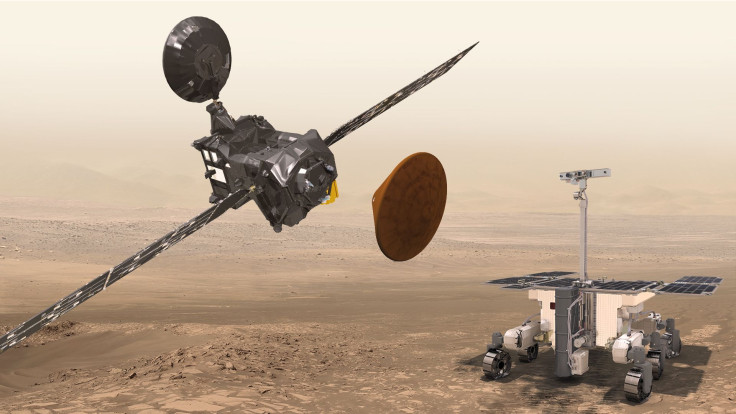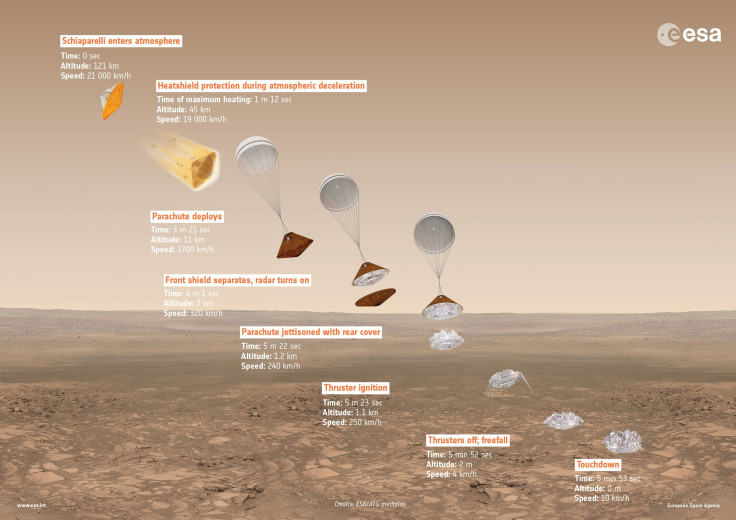ExoMars Mission: ESA Targets Meridiani Planum For Schiaparelli Module’s October Landing

ExoMars — a spacecraft sent to Mars in the first phase of a joint mission by the European Space Agency (ESA) and Russia’s Roscosmos — is on course for its Oct. 19 rendezvous with the red planet. On Thursday, the ESA released a photograph of the location where the mission’s Schiaparelli module will land, if all goes as planned.
The location — Meridiani Planum — is an area of Mars close to the equator that is relatively flat and smooth, making it an ideal region to attempt a landing. NASA’s Opportunity rover also landed there in 2004.

“The region has also been well studied from orbit and is shown to host clay sediments and sulphates that were likely formed in the presence of water. Indeed, a number of water-carved channels are also clearly visible, in particular in the southern portion of the image,” the ESA said in a statement.
The first phase of the ExoMars mission, consisting of two separate modules — the Trace Gas Orbiter (TGO) and the Schiaparelli landing module — was launched from the Baikonur Cosmodrome in Kazakhstan in March. While the TGO will enter the Martian orbit in October and will begin a study of the planet’s atmosphere — a study that will last at least until 2022 — Schiaparelli will attempt to land on the planet’s surface — a daunting task made notoriously difficult by the Mars' thin atmosphere.

The main objectives of the ExoMars mission are to demonstrate technologies needed to safely land on the red planet, and to search for evidence of methane — a gas emitted by living microbes on Earth — and other trace atmospheric gases that could be signatures of active biological or geological processes.
“It will also obtain the first measurements of electric fields on the surface of Mars that, combined with measurements of the concentration of atmospheric dust, will provide new insights into the role of electric forces in dust lifting, the trigger for dust storms,” the ESA said in the statement.
However, the second phase of the mission, which aims to land a rover on Mars, is facing funding issues. As a result, its launch date was pushed back to 2020 from its original target of 2018.
So far, four rovers — Sojourner, Sprit, Opportunity and Curiosity — all sent by NASA, have successfully landed on Mars. Two — Opportunity and Curiosity — are still operational.
“The successful implementation of both ExoMars missions will allow Russia and Europe to jointly validate cutting-edge technologies for Mars entry, descent, and landing, for the control of surface assets, to develop new engineering concepts and service systems that can be used by other Solar System exploration missions, and to carry out novel science at Mars,” the ESA said in May.
© Copyright IBTimes 2025. All rights reserved.






















